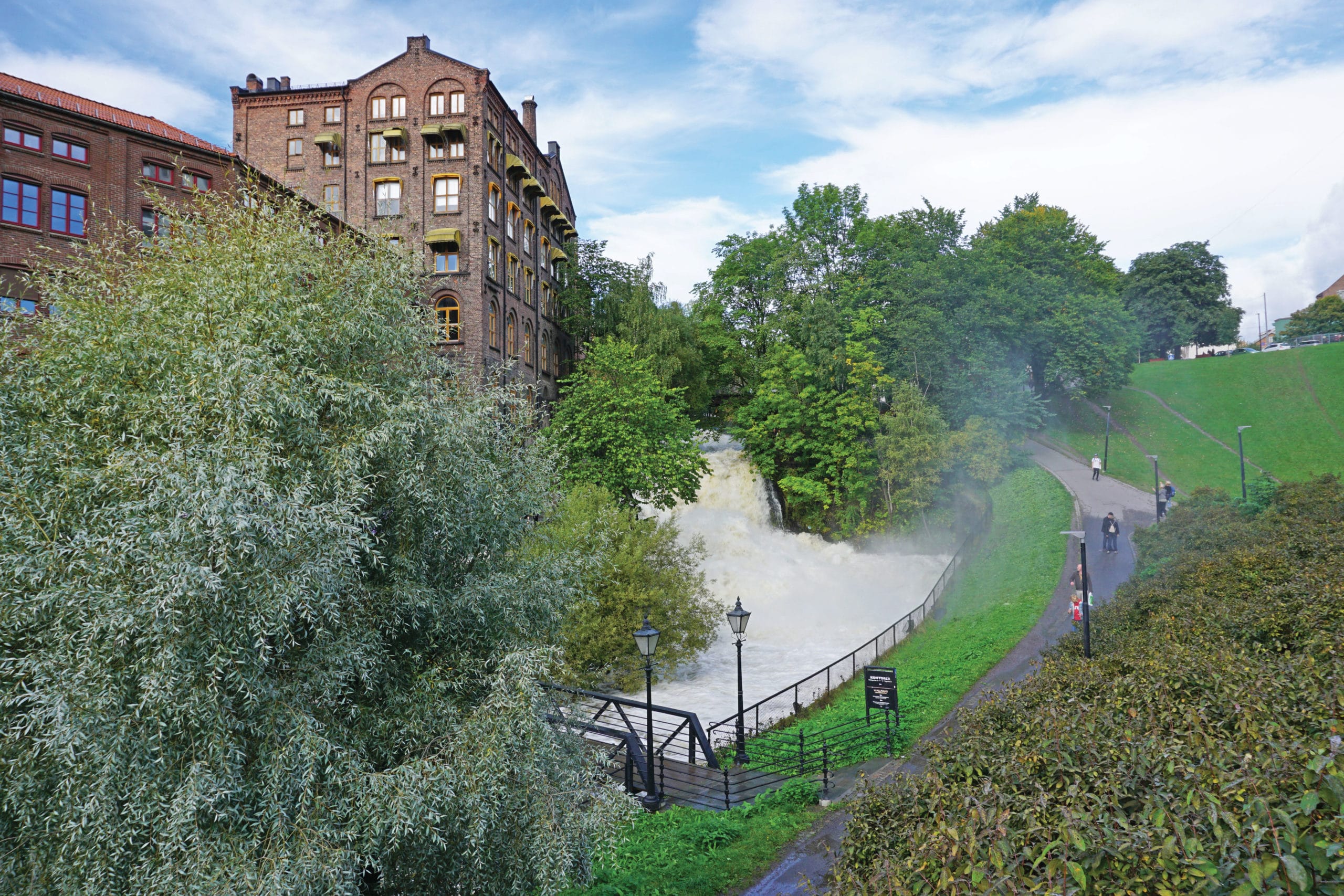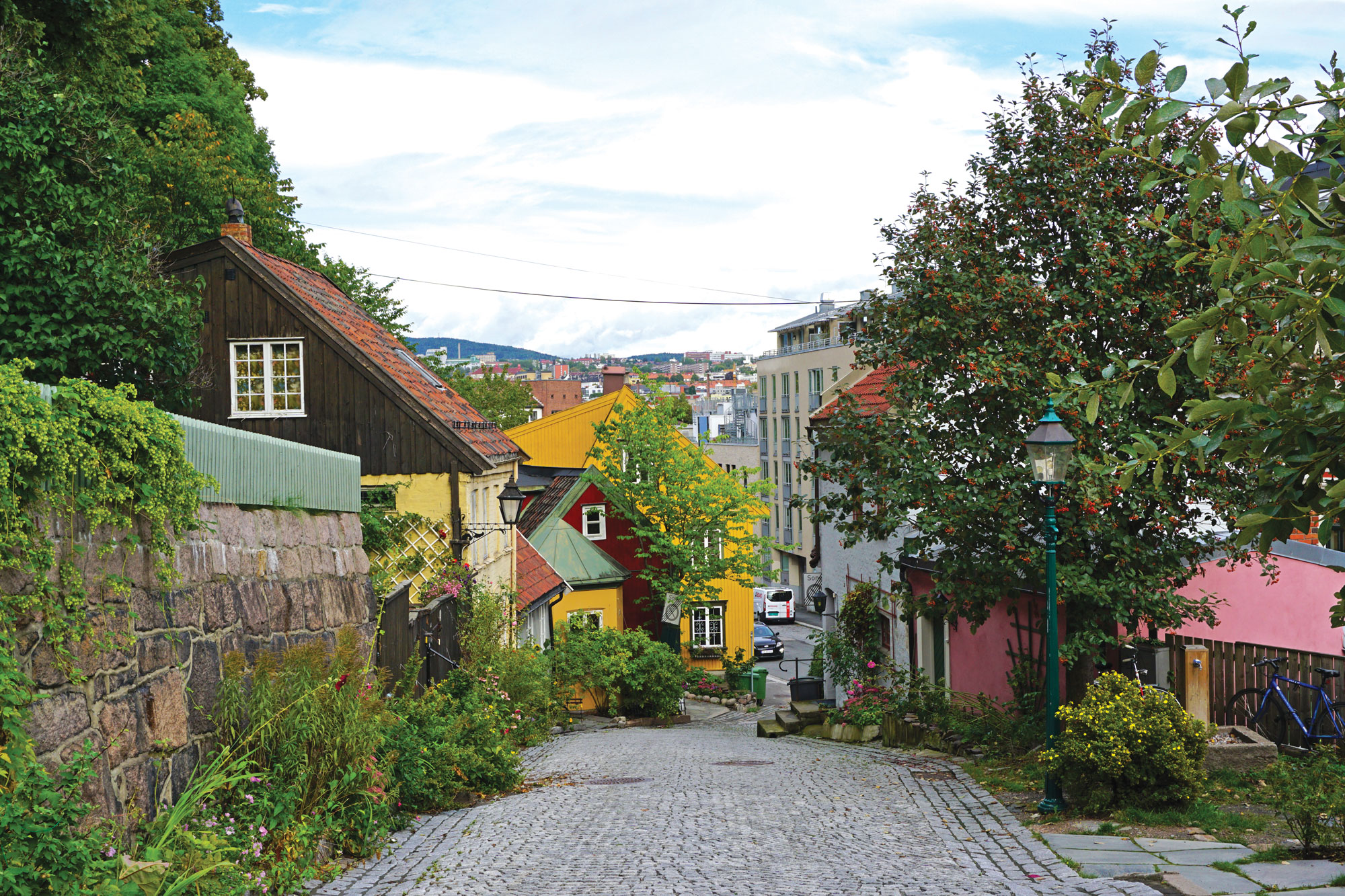
Beautiful escapes surround the popular mathallen Food Hall in the Vulkan area of oslo. you can easily spend a day on the akerselva river walk or exploring the neighborhoods in and around historic damstredet, with houses that date back to the late 1700s and 1800s. [Photo: Tord Baklund for #VISITOSLO]
DID YOU KNOW?
Oslo has a “bee highway.”
Anyone can join the Pollinator Passage and help save bees by building bumblebee boxes or planting flowers. Two large hives, home to approximately 400,000 bees, can be found on the roof at Mathallen.
Ten, even five years ago, the hub that is now the Vulkan area between Oslo’s city center and the Grünerløkka borough didn’t exist. Developed along the scenic Akerselva river walk—a popular spot for bicyclists and pedestrians, complete with waterfalls and even a salmon ladder—this bustling area is now home to two Energy Class A hotels, an uber popular food hall, the country’s largest charging facility for electric cars, and a plethora of restaurants and bars.
“When we started the project in 2004, we wanted to make a city within the city with a multitude of activities,” says Sverre Landmark, commercial director for Aspelin Ramm, a leading developer in Oslo. Today, the 170,000-square-foot former industrial area is made up of many adapted buildings, like Mathallen Food Hall, Norway’s first food hall and host to a myriad of local eateries, shops, and entertainment in a renovated factory building. The name Vulkan comes from the steel work that took place here so many years ago. In Greek mythology, Vulcan is the god of fire and handicraft—including metalworking—and Landmark says the name was meant to be, as what used to be a cold, unfriendly place has become something warm. He says what exists in this area today is a huge departure from the neighborhood of old. “Kids were not allowed to play here … glass windows were damaged, there was a lot of graffiti, drug addicts were hanging around. It was really nasty,” he says. “It’s difficult to describe because it’s so totally different now.”

[Photo: Finn Ståle Feldberg]
On a spring day in 2017, the scene is vibrant. Students sit in the sun in the park, while locals and visitors alike fill seats at bars and restaurants overlooking the rushing river. On any given weekend you’ll find a special event on Vulkan’s grounds. A Conflict Kitchen–inspired goat festival was taking place in May, while a theatrical performance kicked off hours later at Norway’s national stage for dance, Dansens Hus. People of all ages hop on city bikes at the station just outside Scandic Vulkan Hotel, Norway’s first Energy Class A hotel.

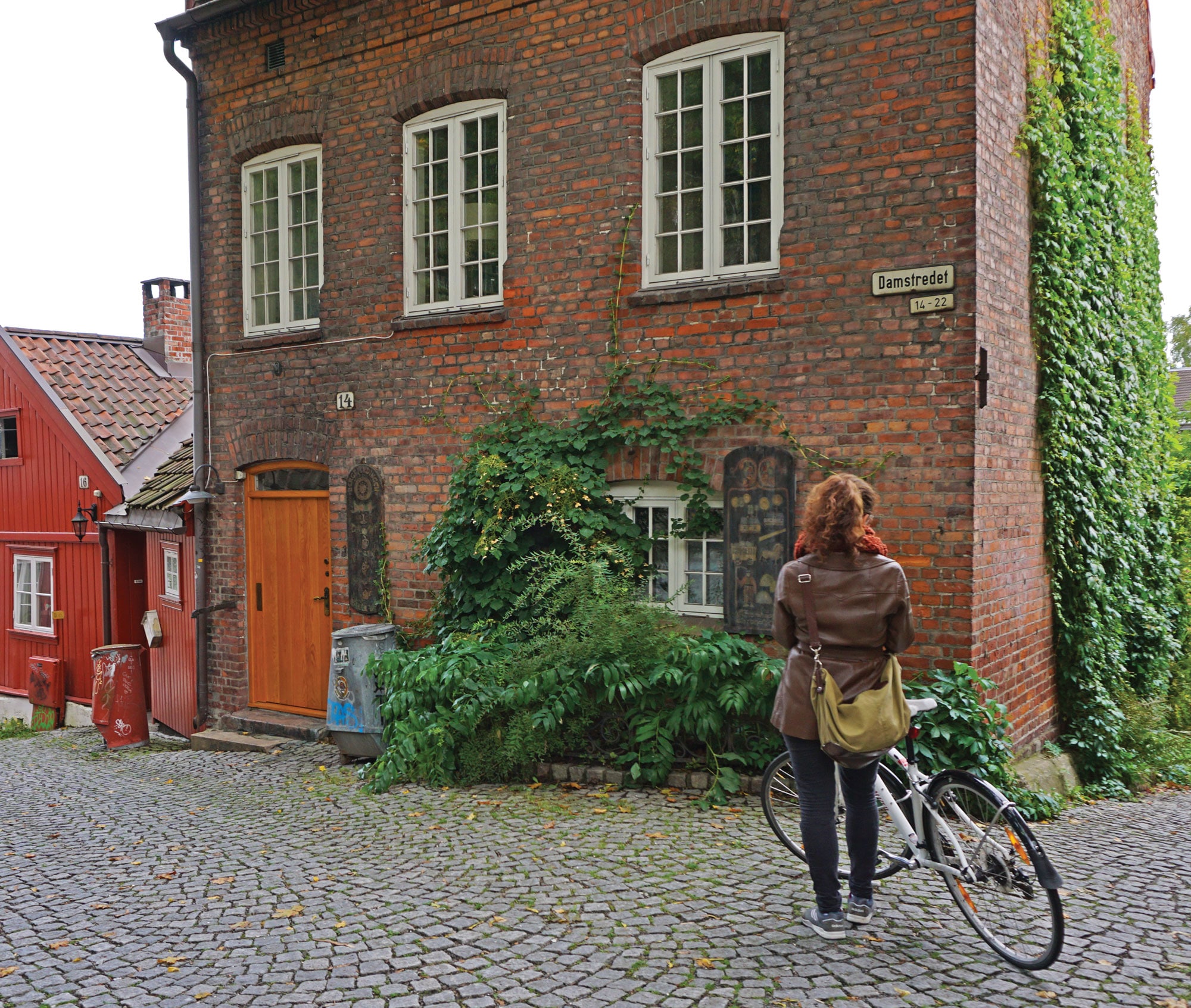
[Photos: Tord Baklund for #VISITOSLO]
“We decided very early on that working with sustainability, energy, and environmental issues was going to be core to this project,” Landmark says of the hotel and the Vulkan area. A system of geothermal wells that runs nearly 1,000 feet deep supplies all of Vulkan’s buildings with heating and cooling. Nearby, you’ll notice Bellona House, Norway’s equivalent to Greenpeace, with its extensive solar water heating system. Both Scandic Vulkan and neighboring PS:hotell have state-of-the-art insulation solutions and recycle energy from coolers and elevators.
Across from Scandic Vulkan, a mixed-use building combines offices, shopping, dining, and apartments with rooftop terraces that overlook the city, a former silver mine, historic houses, and the city’s oldest church (circa Middle Ages). The building is also home to the Michelin starred Kontrast restaurant, which harvests some of its herbs in a rooftop garden there.
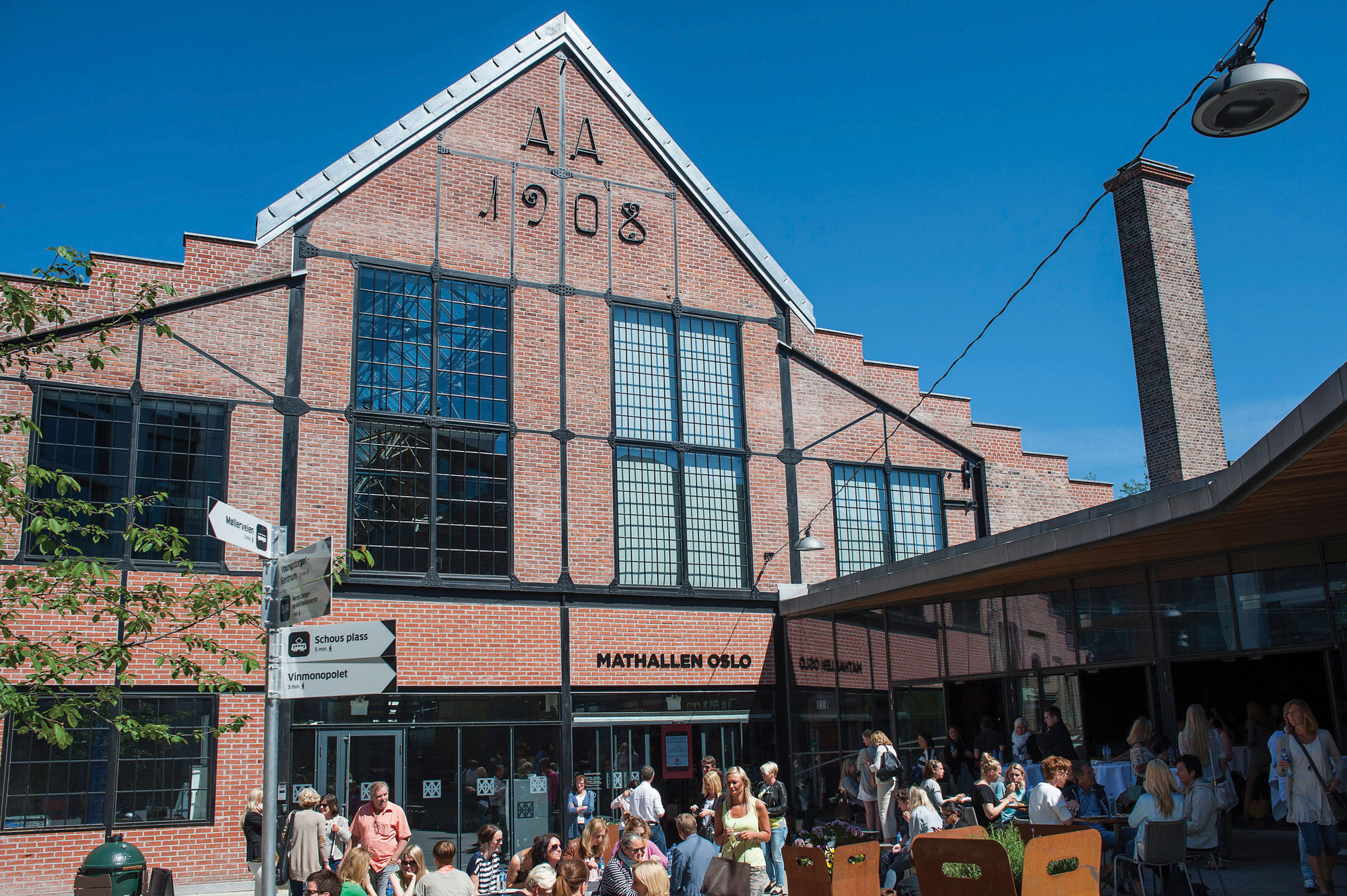


[Photo: Finn Ståle Feldberg]
When Landmark joined Aspelin Ramm in 2004, the company was already focused on high-quality architecture using good materials, but that has since increased to include focusing on more energy saving programs. “It’s been escalating. That has to do with us, our experiences, and the society around us,” he says. “Today we see people are attracted to projects with high energy standards. Now it’s not a question of if you should do it; it’s how far you should go.”
Sometimes all it takes is a little creative thinking to make a big impact. “Far more important than saving just a little amount of energy is to reduce the consumption of space,” Landmark says. “For instance, in our offices we do not have a canteen area because we can use (neighboring) PS:hotell’s.” Why make an office cafeteria when there’s a kitchen next door? Using what you have is more efficient, it gets people out and networking with neighbor businesspeople, and it helps PS:hotell, whose mission is to train, as nearly 90% of its employees are people who need support to join or rejoin the regular workforce. Plus, you do save energy. “If you reduce the consumption of square meters by 10%, you reduce energy consumption by 10%. It goes without saying.”
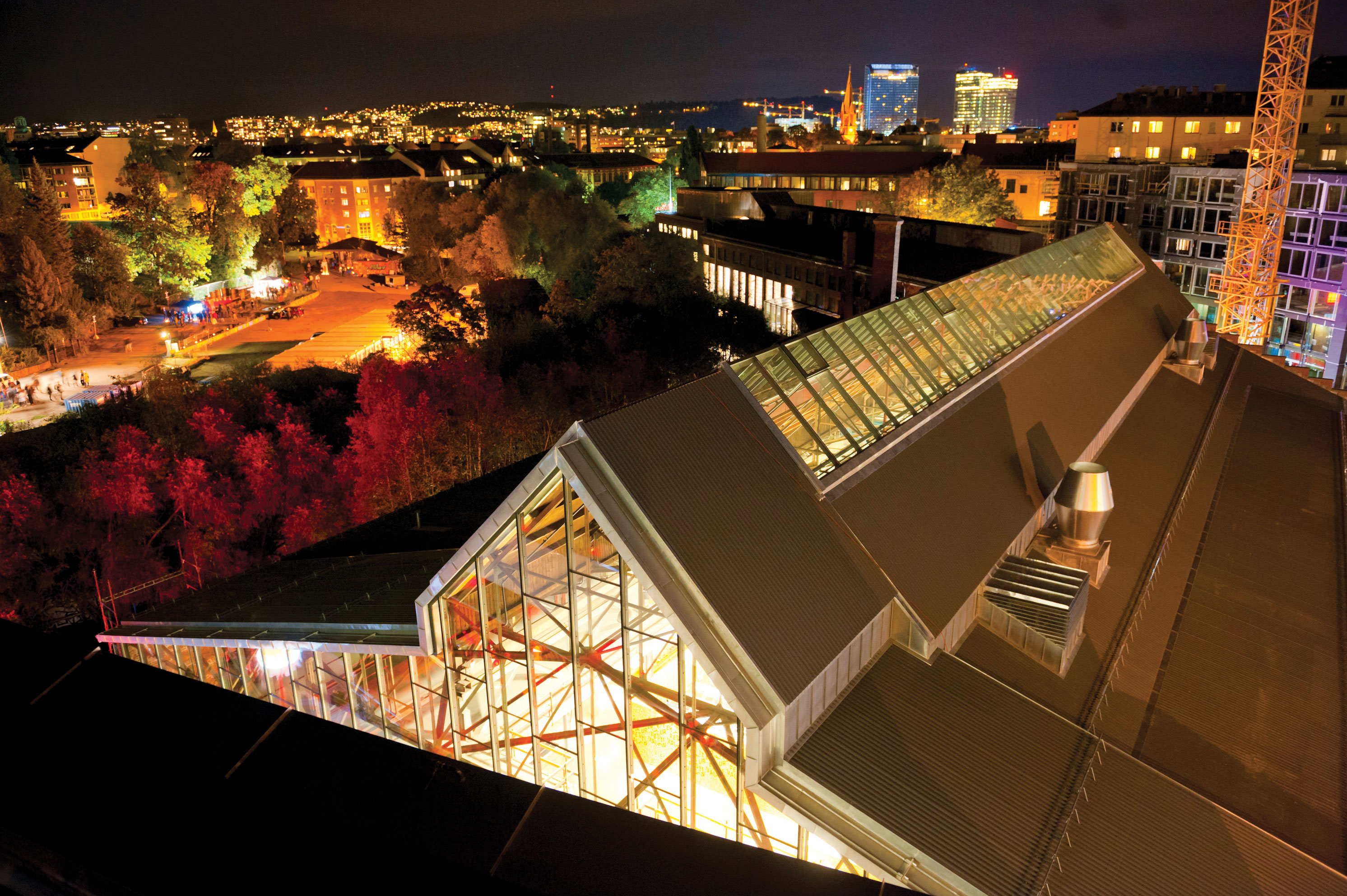

[Photos: Finn Ståle Feldberg]
Part of Aspelin Ramm’s focus in revitalization, though, has been getting a head start on changing perceptions. Rather than waiting for the new buildings at Vulkan to open, for instance, those involved in the project organized temporary activities like festivals and concerts to get people thinking of the area differently in the years leading up to the grand reveal. Then, by the time the development was complete, it was already top of mind.
While the project has saved some historic buildings, it’s also preserving small business, like the butcher who was operating in the countryside before opening a thriving shop in Mathallen. “During the last 20 years in Oslo, every week a specialty shop was closed,” Landmark says. “All the specialty shops more or less disappeared.” In a time when mom-and-pops were being replaced with chains, it was important to create a space that could sustain itself with shopping, dining, and recreation to bring people back. “We needed to create this community.” The food hall is also home to mega events like the Norwegian final for the Bocuse d’Or (the world championship for chefs).

[Photo: Tord Baklund for #VISITOSLO]
Location, of course, is key, and Landmark suspects the popular food hall and everything around it wouldn’t exist at all if not for the river—long a source of life and necessity, from the former steel mill to modern-day recreation. Now 200 people work in the food hall—more than the number who worked here when the area was full of steelworkers, Landmark says. “It’s all about the history. If you replace that with something new it wouldn’t be the same.”
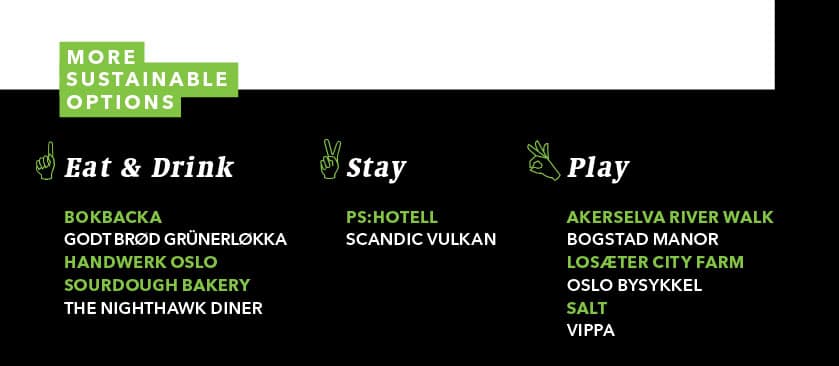
Learn more at visitolso.com.

